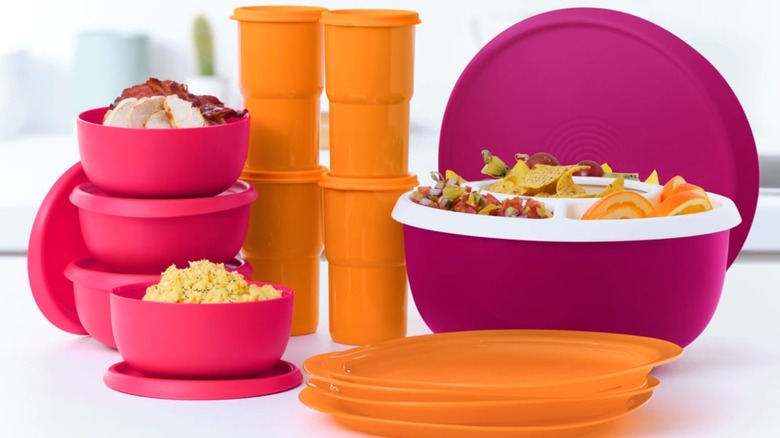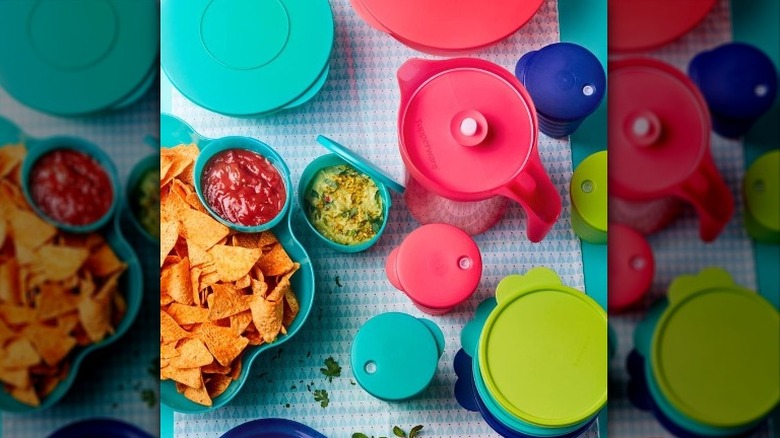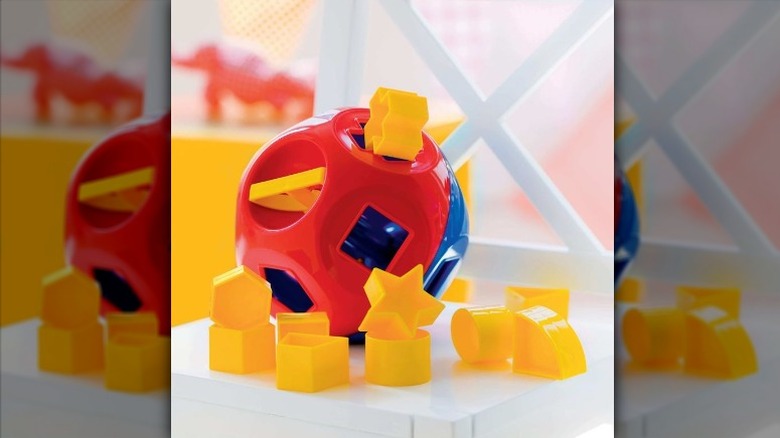Why Tupperware Isn't Sold In Stores
If you're like many Americans, you likely have a few hand-me-down, possibly smelly Tupperware items that have lived in your family for generations. These tough-and-tumble plastic artifacts are seemingly indestructible. Whether you've got a sizeable selection of food keepers, a stack of plastic cups, or a retro children's toy (does anyone remember the shape-sorter ball or the long-necked giraffe?), you likely treasure your Tupperware relics and plan to pass them on to the next generation. After all, that's what you do when a product lasts that long and never goes out of style.
But there once was a time when Tupperware was a fledgling company that no one knew about. Glass and ceramic contraptions were the norms for food storage containers (via Smithsonian). People hadn't tapped into that potential for plastic, nor did they understand it. But thanks to Earl Tupper's inventive genius and Brownie Wise's stellar selling skills, this manufacturer of durable plastic food storage containers was about to transform fridges and pantries across the continent.
The public was once very uncomfortable with plastic
Part of the way things panned out for Tupper is rooted in how it began. Following WWII, DuPont needed ideas for new products that could utilize its plastics, so the company approached Earl Tupper, among others (per PBS). At the time, plastics were not the finely honed finished product that we have today. According to Smithsonian Libraries, they were viewed as "brittle, smelly, generally unreliable," so Tupper had his work cut out for him. He was up for the challenge though. His end product was like modern-day plastics. And, with the addition of a lid that could form an airtight seal, the first Tupperware product was born.
This was known as the Wonderbowl and it introduced Tupperware's unique "burp" seal. For those unfamiliar with this term, Wired explains that you simply lift the corner of the lid, "'burp' out some air," and push the lid back down firmly to form a seal. Clever, right? Absolutely. But when you have a product made from an unfamiliar material, and you add a confusing way to seal it, the public might not welcome it with open arms. And this proved true for Earl Tupper's new creation.
Home parties saved Tupperware
It might be hard for a 21st-century dweller whose life pretty much revolves around plastics and well-sealed lids to imagine how strange Tupperware probably felt to a 1950s housewife. Smithsonian magazine explains that it was "too high-tech" and "too difficult for people accustomed to glass jars and ceramic containers to intuit how to use the seal." This line of plastic storage containers for food simply baffled the public. As a product sitting on a shelf in a store, it wound up collecting dust. Instead, it needed someone to show women how to use it and demonstrate its many benefits. And the person to do this was top-notch Tupperware saleswoman, Brownie Wise.
She was hired as Tupperware's Vice President and took control of the company's home party division and the Tupperware party was born. A skilled Tupperware dealer would present the product to a hostess and her invited friends (aka customers) and show them how to use it. This would result in a greater understanding of this innovation and, of course, greater sales. And the dealer would be rewarded with an income and the chance to win prizes. Tupperware was removed from retail outlets and became exclusively available through home parties (via PBS).
By 1954, Tupperware sold $25 million worth of plastic products and had roughly 20,000 people employed within their sales chain (per Smithsonian). And with sales figures like that, Tupperware hasn't needed to step foot in a brick and mortar store again.


